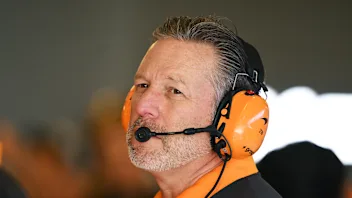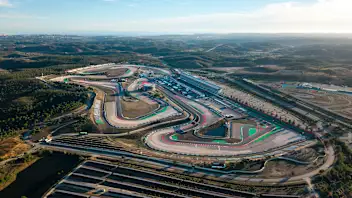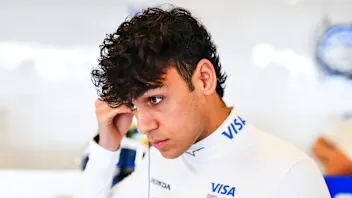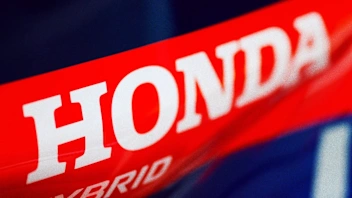Monaco - What to Watch for...
From Rosberg and Hamilton's brewing rivalry to intra-team duels at Red Bull and Ferrari, and from swashbuckling rookies to safety cars and potential first-lap drama, we preview the key themes to look out for in Sunday’s Formula 1 Grand Prix de Monaco 2014...
The Hamilton-Rosberg battle to reach fever pitch
Regardless of the fact that the stewards found nothing untoward with Nico Rosberg’s yellow flag-inducing off-track moment at the end of Q3, there’s little doubt that Mercedes team mate Lewis Hamilton was hugely frustrated at having his chance of grabbing pole snatched away from him. The awkward body language between the Briton and the German in the post-qualifying press conference suggests the competition between the two men is becoming less genial by the day - and that can only heighten the chances of another epic scrap between the silver cars.
You have to go back to 2002 for the last time a driver won in Monaco from second on the grid (on that occasion it was McLaren’s David Coulthard), but Hamilton remains determined to claim a fifth successive 2014 victory. By contrast, the polesitter has won nine of the last ten races in the Principality and that’s good news for Rosberg (even if the one non-polesitter to win was Hamilton, from third on the grid in 2008). History suggests that it’s essential for the German to halt his team mate’s dominant run now if he wants to remain in contention for the title - only six drivers (Michael Schumacher, Nigel Mansell, Jack Brabham, Jim Clark, Alberto Ascari and Sebastian Vettel) have won five or more consecutive Grands Prix in one season and all went on to win the championship in those same seasons. With all of that in mind, we can expect a fantastic race at the front of the field.
Red Bull and Ferrari team mates set for race-long duels
While there was nothing to separate Rosberg and Hamilton in the fight for the front row, Red Bull and Ferrari’s respective drivers were also incredibly well-matched in qualifying, suggesting there could be more than one intra-team epic during the Grand Prix.
In the Red Bull camp, Daniel Ricciardo out-qualified his four-time world champion team mate for the fifth time this year. Sebastian Vettel had the mitigation of ERS problems, but even so the need to assert himself against his younger and less experienced team mate is growing increasingly urgent - and that could lead to fireworks on Sunday. Over at Ferrari, meanwhile, Fernando Alonso continues to have a slight edge over Kimi Raikkonen, although the Finn’s sixth place was impressive given the time he lost in practice with a gearbox complaint. Disgruntled by strategy calls in the immediate aftermath of the Spanish Grand Prix, Raikkonen will have the perfect opportunity to seize the initiative if he can get ahead of Alonso on the Monte Carlo streets and beat him to the chequered flag for the first time this year.
High probability that we’ll see the safety car - perhaps more than once…
With 22 cars furiously battling for position around a narrow, Armco-lined track, it is little wonder that Monaco has always yielded a high number of safety-car deployments. Overtaking is notoriously difficult in the Principality, which perhaps explains why last year alone there were three safety-car periods, all brought about by collisions. In total, nine of the last 14 races in Monaco have featured one or more safety-car deployment, so there’s every chance that we’ll see a different kind of silver car leading the field in Sunday’s race. Of course that means the timing of pit stops crucial, although making up positions because of the safety car is often more down to luck than to judgement.
Rookies up the sharp end
While Mercedes once again dominated the headlines, Kevin Magnussen’s and Daniel Kvyat’s performances to break into Q3, and thereby secure top ten starting spots, were also mightily impressive and noteworthy.
Kvyat’s run to the final stage of qualifying was all the more remarkable given the fact he has never competed at Monaco before, and that he had to regroup after putting his Toro Rosso into the Turn 10 barriers in Q1, and lining up tenth was an incredible display of maturity and talent.
Magnussen meanwhile out-paced McLaren team mate Jenson Button and matched his best grid position since Australia by qualifying eighth, a sensational performance given this is his Formula One debut at Monaco. The Dane has previous experience at the track, having qualified inside the top four in two consecutive visits with Formula Renault 3.5, and like Kvyat has the swashbuckling style to stay at the sharp end throughout Sunday’s race.
First lap incidents a real possibility
Just as there is the perennial risk of safety cars in Monaco, so too there is the chance of cars colliding over a hectic opening lap. Both of the previous two Grands Prix here have seen first lap incidents - in 2012 Romain Grosjean sparked a multi-car crash at Ste Devote, whilst last year Giedo van der Garde was involved in a tangle at the hairpin. Every driver knows that the start represents their best chance to make up positions, and when you combine that with the ‘funnel effect’ that many of the corners induce, there’s every possibility that there’ll be some kind of contact on lap one.
Durable tyres could force drivers to attack
This year’s soft and supersoft tyres are harder than their equivalents last year, and that is one of the reasons tyre wear hasn’t been a big issue at Monaco this season - in fact, most of the drivers found that it took a couple of laps in qualifying to get enough heat into their front tyres, regardless of compound. As a result, drivers know they cannot rely on pit stops and strategy to get ahead of their rivals - and that may force them to do their attacking on the track. As Lotus trackside operations director Alan Permane explained: “The tyre allocation here is particularly durable so trying something creative with strategy won’t be an option.”
Pirelli think it’s likely that a one-stop strategy is the quickest way to go, although they add that the potential for safety cars means that teams must stay flexible. The supersoft tyre is around one second per lap faster than the soft so the optimum way to go would be to start the race on the red-marked tyre before switching to the harder yellow-marked rubber around lap 30.
Next Up
Related Articles
 Brown insists McLaren ‘won’t change the way we race’
Brown insists McLaren ‘won’t change the way we race’ 10 ways to get your Formula 1 fix during the winter break
10 ways to get your Formula 1 fix during the winter break Formula 1 to return to Portugal in 2027 and 2028
Formula 1 to return to Portugal in 2027 and 2028 Celebrating the first F1 Allwyn Global Community Awards
Celebrating the first F1 Allwyn Global Community Awards Marko ‘believed in me when others didn’t’ – Lindblad
Marko ‘believed in me when others didn’t’ – Lindblad Honda reveal details around power unit launch
Honda reveal details around power unit launch